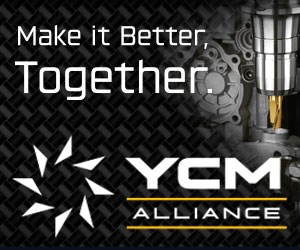Ratio Analysis: Injection Molding
This ratio analysis published by SPI can be used to show the estimated effect of 20, 30 and 40 percent cycle reduction for just one mold, one press or a whole plant. Just change the Sales dollars at the bottom of the table to change the profit dollars.
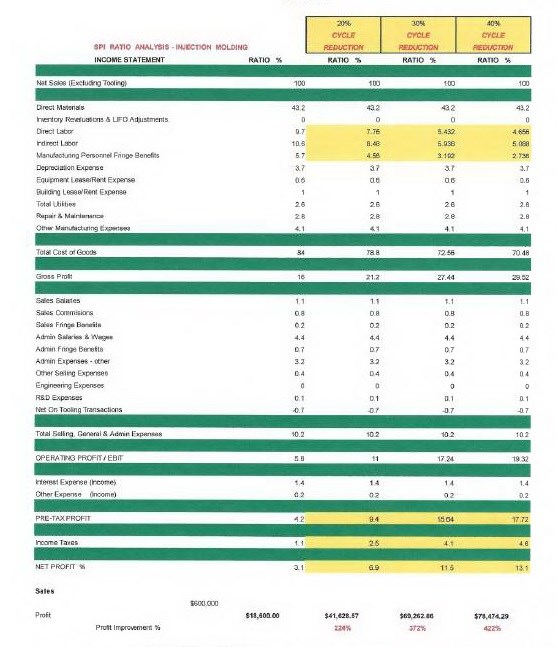
According to Bob Beard, P.E., president of Robert A. Beard & Associates Inc,. and a Honored Fellow of SPE, this ratio analysis published by SPI can be used to show the estimated effect of 20, 30 and 40 percent cycle reduction for just one mold, one press, or a whole plant. Just change the Sales dollars at the bottom of the table to change the profit dollars.
To simplify the analysis, consider one mold in the press 100 percent of the time: 6,000
hours/year at $60/press hour. This would generate $600,000/year in Sales. A conventional
mold would generate a profit of $18,600. A conformal mold would generate:
20% cycle reduction = $41,628.57 - a 224% increase
30% cycle reduction = $69,262.86 - a 372% increase
40% cycle reduction = $78,474.29 - a 422% increase
Conformal cooling will decrease rejects (such as warping) because of the mold's uniform cooling; thereore, any reject reduction will fall directly into profits (for example, a 5-percent reject reduction would add an additional 5 percent to profits).
Keep in mind that increases for the cost of the engineering analyses and the incremental cost to manufacture a conformal mold over a conventional mold must be subtracted from the profit.
Related Content
-
Leading Mold Manufacturers Share Best Practices for Improving Efficiency
Precise Tooling Solutions, X-Cell Tool and Mold, M&M Tool and Mold, Ameritech Die & Mold, and Cavalier Tool & Manufacturing, sit down for a fast-paced Q&A focused on strategies for improving efficiencies across their operations.
-
3D Scanning Quickly Solves Tool Repair Problems
3D scanning supports the repair of molds with no history, drawings or design files.
-
MMT Chats: Predictable Manufacturing and Incremental Gains Can Transform Moldmaking
MoldMaking Technology Editorial Director Christina Fuges catches up with the president of Eden Tool and Eden Manufacturing, Dave Tomic. We talk about predictable performance in moldmaking and the value of small incremental gains in an organization versus big change via disruptive technology. This episode is brought to you by ISCAR with New Ideas for Machining Intelligently.





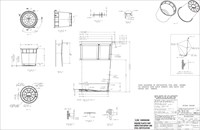
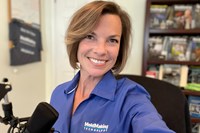
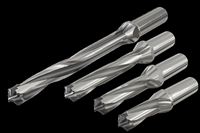



_300x250 4.png;maxWidth=300;quality=90)



